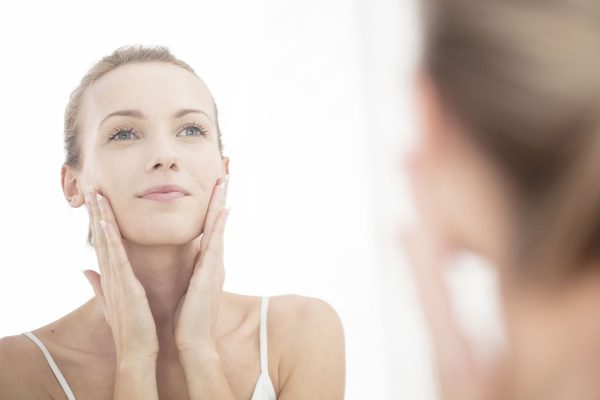Causes of dry eyelids
Dry eyelids can result from a lack of care. In particular, the wrong care product or cleaning agent can deprive the skin of moisture. It is essential to cleanse the skin in the evening. It rids the skin of everyday dirt and makeup. But daily use of soap can quickly dry out and irritate the skin, especially around the delicate edges of the lids. Therefore, it is essential to care for the skin afterwards with a moisturising cream.
Furthermore, dry eyelids are caused by too much friction. It is common to rub your eyes several times when you are exhausted. Since the skin around the eye is very sensitive to mechanical stimuli, dryness and minor wounds can quickly occur. Allergies to make-up products, skin care products, flowers, grass or pollen and certain foods can also cause dry eyelids.
Long work periods in front of the PC also put a lot of strain on the eyes. The eye is focused on the screen for hours, and the musculature of the eye is very monotonous and stressed. This can result in the eyes not being adequately irrigated with tears and the skin around the eyes also becoming too dry.
Dry and reddened eyelids are particularly common in the context of neurodermatitis. This is a general dryness of the skin all over the body. It manifests itself particularly frequently in the eye and lip area. In the case of existing neurodermatitis, skin care is critical and often requires unique care products depending on the extent of the disease.
Diseases of the thyroid gland – a cause of dry eyelids
The thyroid can sometimes be a possible culprit for dry eyelids or dry skin in general. If the thyroid gland becomes diseased, it usually produces either too much or too little thyroid hormones (so-called thyroxine (T4) and triiodothyronine (T3)), both of which have different effects on the body. The thyroid hormones stimulate the body’s metabolism in a higher sense, so a deficiency slows it down, while overproduction lets it run at full speed.
With an undersupply of thyroid hormones, i.e. with an underactive thyroid, dry skin areas, dry hair, and brittle nails are often noticeable, so the dry skin can also show up in the size of the eyelids. The eyes themselves can also be dry and start to burn as a result, and the eyelids can also swell.
Eczema – a cause of dry eyelids
Atopic dermatitis is a chronic skin disease characterised by flare-ups of varying degrees of skin inflammation, particularly pronounced at so-called predilection sites, i.e. preferred areas of the skin.
The cause is probably that the skin of those affected is disturbed in its barrier or protective function (possibly this component is inherited). The immune system’s role in the skin itself is misguided – the latter means that it is overly sensitive to non-disease-causing substances in the environment and, on the other hand, also reacts against the body’s structures, which means that it is an autoimmune process.
Especially in adults, the face, the neck and the flexor sides of the arms and legs (elbows and back of the knees) are often most affected. The skin in neurodermatitis is dehydrated, reddened, scaly and very itchy and irritable.
In the face, in addition to the mouth area, the eye area is also particularly affected, so that sometimes very dry eyelids can be noticed. A characteristic sign of neurodermatitis is the so-called Dennie-Morgan wrinkles, which are one or even two folds under the lower eyelid that are caused by the chronically irritated, overly dry skin on the eyelids.




